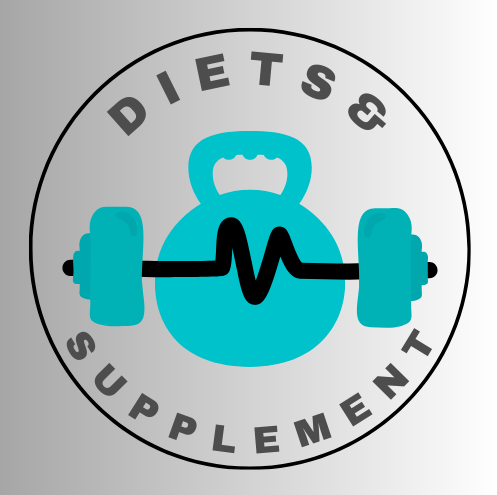 Now, what exactly is calorie counting, and why does it matter? In essence, calorie counting is the practice of tracking the number of calories you consume through the food and drinks you intake. These calories are simply units of energy that your body uses to fuel all of its functions, from breathing to running a marathon.
Now, what exactly is calorie counting, and why does it matter? In essence, calorie counting is the practice of tracking the number of calories you consume through the food and drinks you intake. These calories are simply units of energy that your body uses to fuel all of its functions, from breathing to running a marathon.
You’re going to find out that understanding the role of calories isn’t just about weight management; it involves appreciating how this energy contributes to your overall health and well-being. Calories support your body’s vital systems and enable you to engage in daily activities. However, they can also lead to weight gain if consumed in excess without enough physical activity to burn them off.
So, if you want to maintain, lose, or gain weight, you need a clear grasp of calorie counting. It’s a foundational skill that can help you make more informed choices about your diet. Don’t worry too much about the math aspect—once you get the hang of it, calorie counting can become a seamless part of your routine.
Choose a calorie counting approach that resonates with you, whether it’s using a simple food diary, a smartphone app, or even mental tallying. There’s a lot of opportunity in using calorie counting to support your dietary goals. I’m here to help you with that. My goal is to make calorie counting approachable, so you feel empowered to take charge of your nutritional choices.
In my opinion, calorie counting should never be a cause for stress. Instead, it should be a tool that supports a balanced, healthy approach to eating. You can always adjust your approach down the road, but for now, let’s focus on how to determine the caloric value of the food you’re eating—which takes us neatly to the next part of our discussion: decoding caloric labels.
Decoding Caloric Labels: A Guide to Informed Eating
So you’ve grasped the basics of calorie counting. You’re aware that calories are essentially the fuel your body runs on. Excellent! But understanding the nuts and bolts of caloric labels is like learning a new language; it’s your key to informed eating choices.
Every packaged food comes with a nutrition label that tells you everything you need to know, or does it? These labels can be tricky, but I’m here to help you demystify them. First off, the calorie count on your favorite granola bar isn’t the only thing to eye. There’s something equally important: the serving size. It’s the benchmark for the nutritional values listed and is often overlooked, leading to accidental overeating.
Here’s a tip: grab a food scale or use measuring cups if you’re serious about accuracy. This isn’t just about being precise for precision’s sake; it’s about gaining real control over your diet. For instance, visually comparing your portion to the serving size can be deceiving. Ever guessed the weight of a slice of cake at a party? Chances are, it’s more than the ‘standard’ serving size listed on the box.
To wrap up this section, I’ll impart a spot of advice: think of calorie counting as a budget. When sifting through these labels, choose items that give you the most nutritional bang for your caloric buck. Do you want a snack that’s 250 calories per serving with little nutritional value, or one that provides vitamins, minerals, and protein within the same calorie limit? The choice is yours.
Moving forward, understanding calories in versus calories out is your next big step. It’s this balance that regulates your weight. In the upcoming section, we’ll explore how tracking what you eat and how much you burn plays into the broader picture of weight management. Calculating your daily caloric needs isn’t complex, but it’s essential. Stay tuned, because that’s exactly what you’re going to learn about next.
The Balancing Act: Calories In vs. Calories Out
Calories are like the currency of our body’s energy economy. To understand how calorie counting plays into weight management, we’re going to take a closer look at the energy balance equation. Fundamentally, it’s the relationship between the calories you take in from food and drink and the calories your body uses for daily functioning and activities.
I’m here to help you figure out your daily caloric needs, which hinge on several factors, including your age, sex, weight, height, and physical activity level. There are multiple methods and calculators available online to help you estimate your maintenance calories – that’s the number of calories where you neither gain nor lose weight.
If you want to change your weight, it’s all about tweaking that balance. For weight loss, you’ll aim to consume fewer calories than your body burns, creating a caloric deficit. Conversely, for weight gain, you’ll target a caloric surplus. And if maintenance is your goal, you’ll strive for caloric equilibrium. It’s vital not to overdo adjustments, as severe caloric deficits can lead to undesirable health effects.
Don’t worry too much about pinpointing an exact number of calories to adjust by. A general rule of thumb is to start with a moderate caloric deficit or surplus. For most people, this is about 500 fewer or extra calories per day for weight loss or gain, respectively. Choose something that resonates with you and is sustainable over the long term.
Overcoming Challenges: Practical Strategies for Effective Calorie Counting
I’m going to be real with you – calorie counting isn’t always a walk in the park. There are days when tracking every single bite seems like a hassle, but don’t let that deter you. I’m here to help you with some tips that can streamline the process and make it a whole lot more manageable.
One of the most common issues people encounter is underestimating portion sizes. Choose something that resonates with you, like using measuring cups or a digital food scale to keep your calorie estimates accurate. And if you slip up? Remember, your first attempt doesn’t need to be your last. Calorie counting is a skill that gets easier over time.
If you want to integrate calorie counting into your busy schedule, start by planning your meals in advance. Doing this can minimize the time you spend logging foods each day. Keep a food diary or use a calorie counting app – many have barcode scanners that make it super convenient to track packaged foods.
I really hope that you find these strategies helpful. Arm yourself with knowledge, patience, and perseverance, and you’ll turn calorie counting into a valuable part of your health journey. Just don’t focus too much on perfection; being consistent is far more crucial in the long run.
Thanks for staying with me through this calorie counting guide. If you’ve got questions or need a bit more guidance, I’d love to help you out. Trying out calorie counting is an excellent step towards understanding and managing your dietary habits, and that’s a huge win for your overall health.
